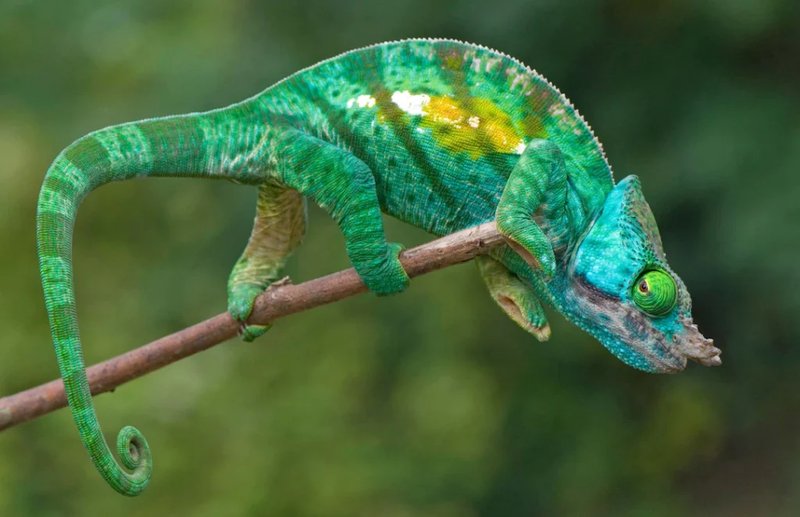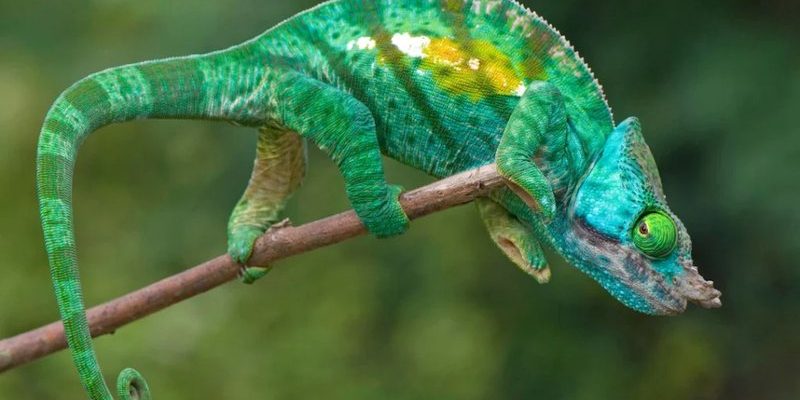
Picture this: if you were a chameleon, you’d want to feel vibrant and full of life, right? In captivity, these lizards rely on their caregivers to provide everything they need—from perfect temperature to the right diet. If any of these elements are off balance, it can lead to health problems that might not be obvious right away. So let’s explore the common health issues faced by Oustalet’s chameleons, how to spot them, and what you can do to help.
Dehydration: A Hidden Danger
One of the most frequent health issues in Oustalet’s chameleons is dehydration. These creatures need plenty of water, but they don’t drink from standing water like many pets do. Instead, they get hydration through misted surfaces or droplets. If they don’t get enough moisture, they can become dehydrated quite quickly.
You might wonder how to tell if your chameleon is dehydrated. A good rule of thumb is to check their skin. If it looks wrinkled or if the chameleon appears lethargic, those could be red flags. Hydration is crucial, so keep a close eye on your chameleon’s drinking habits. Ensure their habitat is misted regularly to mimic their natural environment.
To prevent dehydration, consider using a drip system or a misting system that can automate the process. This way, your chameleon stays hydrated without you having to remember to mist them multiple times a day. It’s like installing a little hydration station just for them!
Respiratory Infections: Watch for Signs
Respiratory infections are another common issue in Oustalet’s chameleons. Just like humans, they can catch a cold or develop infections due to various environmental factors, such as poor ventilation or high humidity levels. You might notice your chameleon making unusual sounds, like wheezing or sneezing—not something you want to hear!
Another clue that your chameleon might be suffering from a respiratory infection is if they’re spending more time basking or if they seem less active than usual. You can help prevent these infections by ensuring their habitat has good airflow and maintaining appropriate temperature and humidity levels.
If you suspect your chameleon is unwell, it’s best to consult a vet who specializes in reptiles. They can provide the right treatment, which may include medication. Honestly, catching it early makes a significant difference in your chameleon’s recovery!
Metabolic Bone Disease: A Nutritional Nightmare
Metabolic Bone Disease (MBD) is a serious condition that often stems from a lack of calcium or inadequate UVB lighting. For Oustalet’s chameleons, this means they may not absorb calcium properly, leading to weak bones and, ultimately, deformities. Imagine trying to run a marathon on legs made of spaghetti—that’s how your chameleon might feel!
Signs of MBD might include swollen limbs, difficulty moving, or even bone fractures. Are you noticing your chameleon sitting on the bottom of its cage instead of basking? That could be a warning sign.
To help prevent MBD, make sure your chameleon has access to proper UVB light for around 12 hours a day. Additionally, a balanced diet rich in calcium is crucial. Dusting your chameleon’s food with a calcium supplement can help keep them spry and healthy. It’s all about finding that perfect balance!
Parasites: Uninvited Guests
Just like humans can get unwanted visitors, Oustalet’s chameleons can also be affected by internal and external parasites. These pests can cause various health problems, including weight loss, lethargy, and general sickness. You might not always see the parasites, but you might notice your chameleon’s behavior changing, which can be concerning.
Common signs of a parasite infestation include diarrhea, vomiting, or a visibly bloated abdomen. If you notice any of these symptoms, a trip to the vet is necessary. They can run tests to determine what type of parasites are present and prescribe the right treatment.
To prevent future infestations, maintain a clean habitat and avoid introducing new reptiles without proper quarantine. Just like you wouldn’t invite someone to dinner without knowing if they’re sick, keeping your chameleon safe from parasites is essential!
Temperature and Humidity: The Balancing Act
Getting the temperature and humidity just right is crucial for keeping Oustalet’s chameleons healthy. These reptiles are sensitive to changes in their environment, and if temperatures drop too low or humidity spikes too high, it can lead to stress and health issues. Think of it like trying to relax in a sauna—you can only take so much before you feel overwhelmed.
For Oustalet’s chameleons, the basking area should be between 85°F and 90°F (29°C – 32°C), while the cooler side of their habitat should be around 70°F (21°C). Monitoring these temperatures with a reliable thermometer is key.
Humidity levels should ideally sit between 50% and 70%. Using a hygrometer can help you keep an eye on this. If you find the humidity is too high, ensure proper ventilation or use a dehumidifier. And if it’s too low? Well, that’s where the misting system comes into play, making sure your chameleon remains comfy and stress-free.
Taking care of an Oustalet’s chameleon is a rewarding experience, but it comes with its share of challenges. Understanding common health issues can help you maintain a happy and healthy environment for your little friend. From dehydration to respiratory infections, being proactive about their care is essential.
Remember, regular veterinary check-ups and a well-balanced habitat are your best friends in this journey. It’s all about paying attention to their needs and recognizing signs that something might be wrong. By staying informed and committed, you’ll ensure your Oustalet’s chameleon lives a long and vibrant life, filled with those dazzling colors you fell in love with. So keep that misting system running, check your temperatures, and enjoy every moment with your fascinating reptilian companion!

